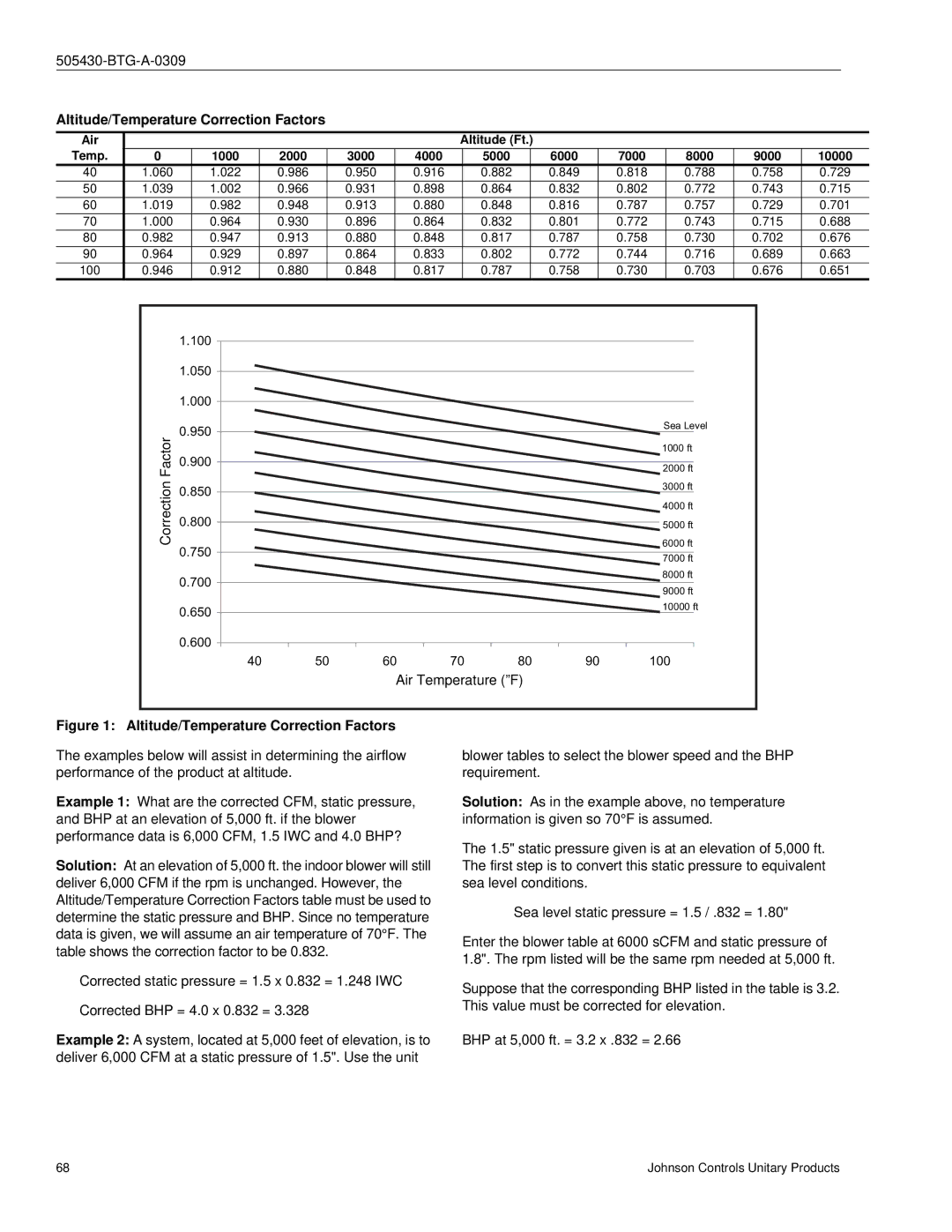R-410A specifications
Johnson Controls R-410A is a widely recognized refrigerant in the HVAC industry, primarily used in air conditioning and heat pump applications. Known for its environmental benefits and efficiency, R-410A has risen to prominence as a reliable replacement for older refrigerants such as R-22, which are being phased out due to their harmful impact on the ozone layer.One of the standout features of R-410A is its low impact on global warming potential, making it an environmentally-friendly choice. It is composed of a mixture of hydrofluorocarbons (HFCs), specifically difluoromethane (R-32) and pentafluoroethane (R-125). This blend allows for efficient heat transfer while minimizing harmful emissions, addressing the growing concerns over climate change.
Johnson Controls emphasizes the efficiency of R-410A systems, which can provide a highly effective cooling performance. They are designed to operate at higher pressures compared to R-22, allowing for more efficient heat exchange and better overall system performance. This results in greater energy efficiency ratings, contributing to lower electricity bills for consumers.
In terms of technology, R-410A systems often feature advanced compressor designs and enhanced coil configurations, which optimize the system’s performance. Johnson Controls integrates state-of-the-art variable speed technologies and smart controls that enhance responsiveness and adaptability to changing environmental conditions. These innovations not only improve thermal comfort but also reduce energy consumption, leading to a smaller carbon footprint.
Another significant characteristic of R-410A is its compatibility with various lubricants, which is crucial for maintaining system performance and longevity. Johnson Controls often utilizes specially formulated lubricants that work optimally with R-410A, ensuring reliable operation and reducing the risk of issues related to lubrication.
In summary, Johnson Controls R-410A is an important refrigerant characterized by its efficient, environmentally friendly properties and advanced technologies. Its application in modern HVAC systems provides users with excellent performance, substantial energy savings, and an effective solution for climate-conscious cooling. As the industry continues to evolve, R-410A remains a central player in the push toward more sustainable and efficient heating and cooling solutions.

